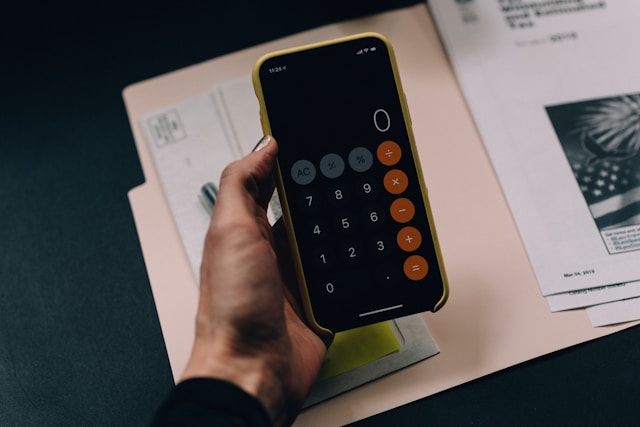When it comes to keeping your money safe, it’s important to understand the role of the Federal Deposit Insurance Corporation (FDIC). But what exactly is FDIC insurance and how does it protect your money? In this article, we’ll explore the basics of FDIC insurance and answer common questions about its coverage and limits.
What is FDIC Insurance?
FDIC insurance is a federal program that protects depositors’ money in the event of a bank failure. It was created in 1933 in response to the thousands of bank failures that occurred during the Great Depression. The FDIC is an independent agency of the federal government and is funded by premiums paid by member banks, not by taxpayers.
The FDIC insures deposits in banks and savings associations up to a certain limit, providing peace of mind to depositors and promoting confidence in the banking system. This means that if your bank fails, you won’t lose your money as long as it is within the FDIC insurance limit.
What is the FDIC Insurance Limit?
The standard FDIC insurance limit is $250,000 per depositor, per insured bank. This means that if you have multiple accounts at the same bank, the total amount of your deposits is insured up to $250,000. For example, if you have a checking account with $100,000 and a savings account with $200,000 at the same bank, both accounts are fully insured because the total amount is within the $250,000 limit.
However, if you have accounts at different banks, each bank is insured separately. This means that you could have $250,000 in deposits at one bank and $250,000 in deposits at another bank, and both would be fully insured.
What is the FDIC Insurance Limit for Trust Accounts?
Trust accounts, which are accounts held in the name of a trust, are insured separately from individual accounts. The FDIC insurance limit for trust accounts is also $250,000 per beneficiary, per insured bank. This means that if a trust has three beneficiaries, the total amount of deposits in the trust account is insured up to $750,000.
It’s important to note that the FDIC insurance limit for trust accounts is based on the number of beneficiaries, not the number of trustees. This means that if a trust has three trustees and three beneficiaries, the total amount of deposits in the trust account is still only insured up to $750,000.
What is Not Covered by FDIC Insurance?
While FDIC insurance provides a significant level of protection for depositors, it does not cover all types of accounts or investments. Here are some examples of what is not covered by FDIC insurance:
- Investments such as stocks, bonds, mutual funds, and annuities
- Safe deposit boxes
- Contents of a safe deposit box
- Losses due to fraud or theft
- Losses due to bank closures that are not caused by financial problems
It’s important to carefully review your account agreements and speak with your bank if you have any questions about what is and is not covered by FDIC insurance.

How Does FDIC Insurance Work?
In the event of a bank failure, the FDIC will step in to protect depositors’ money. The FDIC will either arrange for the failed bank to be acquired by another bank or will pay depositors directly for their insured deposits.
If your bank fails, the FDIC will typically pay you within a few days. You do not need to file a claim or contact the FDIC to receive your insured funds. However, if you have uninsured deposits, you may need to file a claim with the FDIC to receive those funds.
What Happens to My Uninsured Deposits?
If you have deposits that exceed the FDIC insurance limit, those funds are not insured and you may not receive the full amount back in the event of a bank failure. The FDIC will typically pay a percentage of the uninsured amount, depending on the amount of assets the failed bank has available.
For example, if you have $300,000 in deposits at a bank and the FDIC determines that the bank has enough assets to pay 80% of uninsured deposits, you would receive $240,000 from the FDIC. The remaining $60,000 would be considered a loss.
How Can I Check if My Bank is FDIC Insured?
All FDIC-insured banks are required to display the official FDIC logo at each teller window and on their website. You can also use the FDIC’s BankFind tool to search for your bank and confirm its FDIC insurance status.
It’s important to note that not all financial institutions are FDIC-insured. Credit unions, for example, are insured by the National Credit Union Administration (NCUA) instead of the FDIC. If you have accounts at a credit union, you can use the NCUA’s Credit Union Locator tool to confirm its insurance status.
How Can I Increase My FDIC Insurance Coverage?
If you have more than $250,000 in deposits at one bank, you may be wondering how you can increase your FDIC insurance coverage. There are a few ways to do this:
- Open accounts at different banks: As mentioned earlier, each bank is insured separately, so opening accounts at different banks can increase your overall coverage.
- Use different ownership categories: The FDIC offers different ownership categories that are insured separately. For example, if you have a joint account with your spouse, that account is insured up to $500,000 ($250,000 per owner).
- Use different account types: Certain types of accounts, such as individual accounts, joint accounts, and trust accounts, are insured separately. By using different account types, you can increase your overall coverage.
Conclusion
FDIC insurance is an important protection for depositors and helps promote confidence in the banking system. By understanding the basics of FDIC insurance, you can make informed decisions about your deposits and ensure that your money is protected. Remember to always check the FDIC insurance status of your bank and to use different strategies to increase your coverage if needed.





























